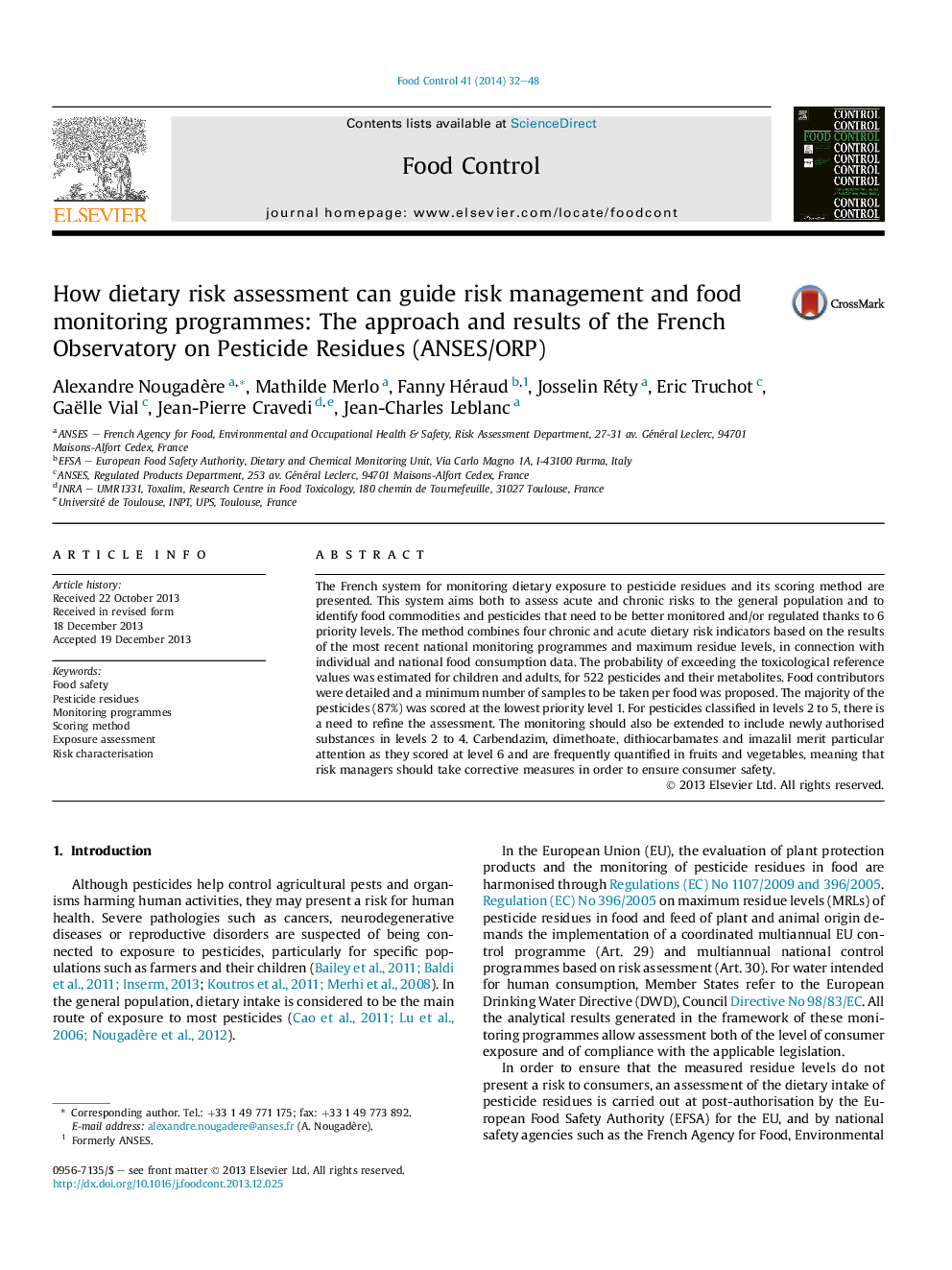| Article ID | Journal | Published Year | Pages | File Type |
|---|---|---|---|---|
| 6391912 | Food Control | 2014 | 17 Pages |
Abstract
The French system for monitoring dietary exposure to pesticide residues and its scoring method are presented. This system aims both to assess acute and chronic risks to the general population and to identify food commodities and pesticides that need to be better monitored and/or regulated thanks to 6 priority levels. The method combines four chronic and acute dietary risk indicators based on the results of the most recent national monitoring programmes and maximum residue levels, in connection with individual and national food consumption data. The probability of exceeding the toxicological reference values was estimated for children and adults, for 522 pesticides and their metabolites. Food contributors were detailed and a minimum number of samples to be taken per food was proposed. The majority of the pesticides (87%) was scored at the lowest priority level 1. For pesticides classified in levels 2 to 5, there is a need to refine the assessment. The monitoring should also be extended to include newly authorised substances in levels 2 to 4. Carbendazim, dimethoate, dithiocarbamates and imazalil merit particular attention as they scored at level 6 and are frequently quantified in fruits and vegetables, meaning that risk managers should take corrective measures in order to ensure consumer safety.
Keywords
Related Topics
Life Sciences
Agricultural and Biological Sciences
Food Science
Authors
Alexandre Nougadère, Mathilde Merlo, Fanny Héraud, Josselin Réty, Eric Truchot, Gaëlle Vial, Jean-Pierre Cravedi, Jean-Charles Leblanc,
